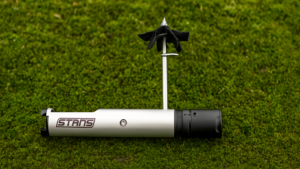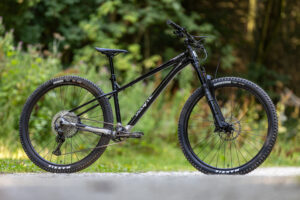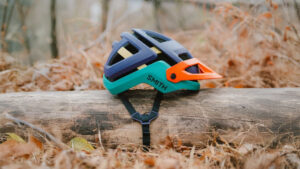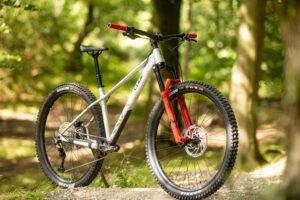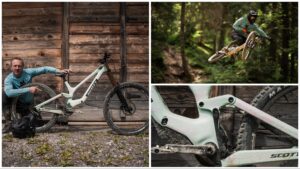Keeps its cool and has got your back on most UK trails, leaving you free to focus on maximising your fun
Whyte S-150C RS V2 review

Trail Bike of the Year in association with Alpinestars
The Whyte S-150C continues to impress, even three years after it was launched.
>>> MBR Trail Bike of the Year 2020
The V2 tag on the latest S-150C RS doesn’t indicate a wholesale change to the frame design. Instead, it highlights some mid-season updates to the specification. Updates that include a switch from SRAM Guide disc brakes to Codes, a 160mm Bike Yoke Divine dropper post replacing the 150mm KS Lev, and the WTB STi 29 rims growing by 1mm to STi 30s. In fact, if you don’t want, or need, all of the latest kit, the original version is still available in limited numbers at the discounted price of £3,199, making it an absolute bargain.

Whyte S-150C RS V2 review
So, other than the colour, the S-150C frame remains unchanged. The UD carbon front end comes in three sizes: medium, large, and extra large. Our size large test bike sports a generous 475mm reach, making it one of the longest on test. Which just shows how far ahead of the sizing curve Whyte was when it first released the S-150C back in 2017.
The rear end of the frame is aluminium, not that it’s instantly obvious, as Whyte has done a great job of seamlessly blending both materials into a cohesive design. And because the chainstays on the S-150C are a little longer than on the T-130 we tested last year, we didn’t feel the need to downsize to achieve balanced weight distribution and handling. In fact, the S-150C is an incredibly easy bike to ride.
Suspension
RockShox recently rebranded its suspension range, so instead of having RC2, RC and MC, we now have its signature series with Ultimate, Select+ and Select. So the 150mm Pike Select+ on the Whyte is a mid-range fork, with an RC Charger damper, DebonAir spring and higher quality seals. Whyte also takes full advantage of the fork’s Torque Cap compatible dropouts with oversize end-caps on the front hub to increase stiffness and steering precision.
Keeping it RockShox front and rear is the Deluxe Select+ shock, with external rebound adjustment and a two-position compression lever. Sag gradients on the shock make it a breeze to set up, and because Whyte has nailed the shock tune, it really is a plug and play bike. We were disappointed though, that rear travel came up 13mm shy of the claimed 150mm.
Components
Tighten Whyte’s Intergrip hidden seat post clamp too tightly and it can inhibit the action of the dropper post. With the Bike Yoke Divine, however, we were able to crank it up to stop the post slipping in the frame, while retaining the fast smooth action the post is renowned for. The extra 10mm of drop was welcome too.
Whyte’s comfy in-house grips and saddle are on point, so you don’t need to change any of the contact points straight away. And even though the rear SRAM Code R brake started to feel spongy after just one ride, once we bled the air out, it offered the solid, consistent stopping power we’ve come to expect from the four-piston Code brakes.
Performance
In terms of sizing and travel, the Whyte S-150 isn’t the biggest bike here, not that you can tell when riding it. So it’s easy to see why Whyte has billed it as a Trail/Enduro bike. It’s not the most sprightly though, but once those 29in wheels get rolling, the S-150C is unstoppable. So it’s a good thing that it comes with Code brakes as standard.
And while it’s arguably the best bike here if you like to cruise up fire roads to bomb down the toughest trails, the performance of the Pike Select+ fork is slightly out of sync with the rear end. Yes, it offers good support for sprinting and descending, but there’s an initial harshness to the Pike that you don’t get on a Lyrik, or the Fox 36 forks in this test. It’s not enough to restrain the S-150C, but if you really want to let this bike run, we’d recommend dropping in a Charger 2.1 cartridge that was originally destined for a Lyrik.

Verdict
In the fast-paced world of mtb development, ‘radical’ designs quickly become commonplace. So while the Whyte S-150C RS was breaking boundaries with progressive geometry and bespoke single-chainring frame designs before other brands, the latest bikes from the likes of Nukeproof build on that hard-fought progress and move the needle forward once again. It’s testament to Whyte’s vision then, that the S-150C RS V2 is still in the mix, and with a more responsive fork and the full quota of rear-wheel travel, it could easily have a double-digit rating.









